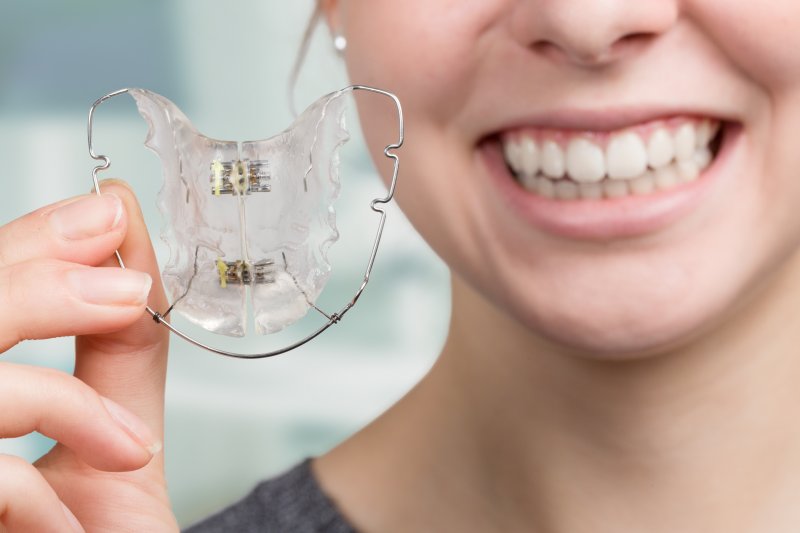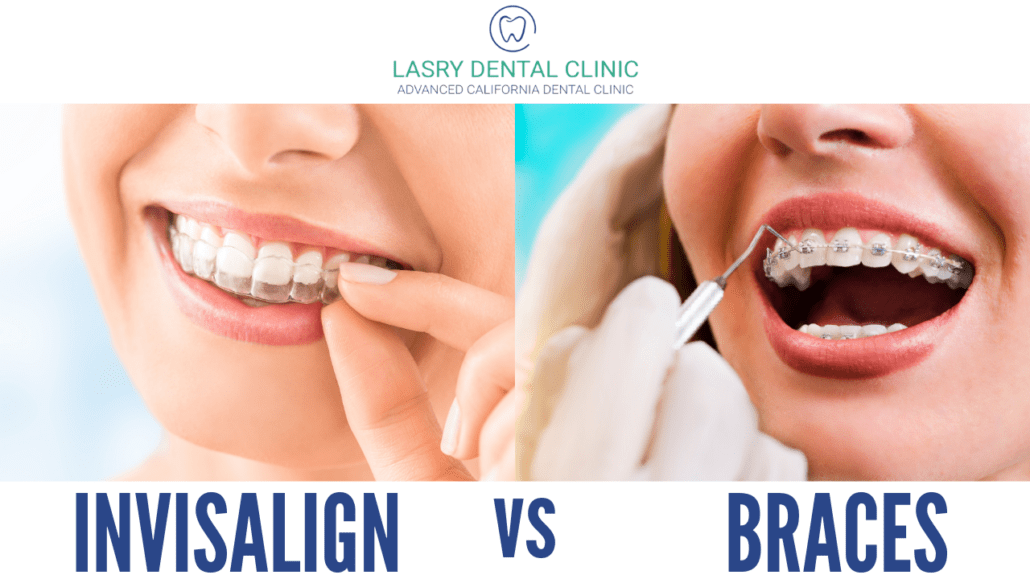The Price of Invisalign: Understanding the Investment in Your Smile
The Price of Invisalign: Understanding the Investment in Your Smile
Blog Article
Invisalign vs. Traditional Dental braces: Which Option Is Right for You?
When taking into consideration orthodontic treatment, the selection between Invisalign and traditional dental braces provides numerous important variables that warrant cautious evaluation. Invisalign offers a very discreet choice with detachable aligners, while standard braces provide a much more visible yet efficient solution for severe imbalance.
Review of Treatment Choices

In contrast, conventional dental braces are composed of metal brackets and wires that are adhered to the teeth. This technique uses continuous stress over time to accomplish positioning. While efficient for complicated orthodontic problems, typical dental braces require regular check outs for modifications and can position difficulties in keeping oral hygiene as a result of the problem of cleansing around wires and braces.
Both choices have their advantages, and the choice usually depends upon specific dental problems, way of living preferences, and individual conformity. Eventually, getting in touch with an orthodontic expert is crucial for figuring out the most appropriate therapy strategy tailored to specific needs. Understanding the nuances of each choice can significantly affect the general success of orthodontic therapy.
Visual Considerations
A considerable factor affecting the choice in between Invisalign and standard dental braces is the visual allure each treatment provides. Invisalign aligners are crafted from clear plastic, making them basically invisible when put on. This discreet appearance is especially appealing to teenagers and grownups that might really feel self-conscious about their orthodontic treatment. The capability to maintain an all-natural smile throughout the placement process can dramatically improve the individual's self-confidence in expert and social setups.
In contrast, conventional dental braces are composed of steel brackets and wires, which can be extra noticeable. While innovations in orthodontic modern technology have caused the growth of smaller sized brackets and tinted elastics, conventional dental braces still maintain an even more conspicuous profile. For some people, the visibility of dental braces might hinder them from looking for essential therapy.
Inevitably, the option in between Invisalign and traditional braces might pivot on personal choices concerning visual appeals. People who prioritize discernment commonly lean towards Invisalign, while those that are much less concerned about exposure may choose typical braces. Understanding the aesthetic effects of each alternative is critical for making an informed choice that straightens with one's lifestyle and choices.
Convenience and Convenience

In regards to benefit, Invisalign aligners are detachable, making it possible for patients to appreciate their favorite foods without constraint and preserve optimum dental health. Cleaning and flossing are streamlined, go to website as the aligners can be gotten during these routines, whereas traditional braces require careful steering around wires and brackets.
Furthermore, Invisalign's progressive system enables less orthodontic gos to. Individuals generally obtain multiple sets of aligners at once, which can enhance the therapy process and minimize time spent in the orthodontist's chair. On the other hand, traditional braces necessitate normal changes, making them much less convenient for those with busy routines. Invisalign. Generally, the convenience and benefit of Invisalign make it an attractive selection for numerous people seeking orthodontic treatment.
Treatment Period and Efficiency
While both Invisalign and traditional braces work in remedying oral imbalances, the period of treatment can vary substantially in between both options. Normally, Invisalign treatment can take anywhere from 12 to 18 months, relying on the complexity of the situation. The clear aligners function by slowly changing teeth into their preferred placements, and regular follow-ups with an orthodontist aid make certain development continues to be on the right track.
On the other hand, standard dental braces typically call for a longer commitment, normally ranging from 18 months to three years. This is due to their fixed nature and the usage of braces and cables, which can be much more reliable for complicated cases and serious imbalances (Invisalign). The therapy performance of typical dental braces is well-documented, as they enable for specific adjustments and higher control over tooth motion
Ultimately, the option in between Invisalign and standard braces might rest on both the anticipated treatment duration and the specific oral problems handy. Consulting with an orthodontist is essential, as they can supply tailored referrals based on specific requirements, guaranteeing the selected approach lines up with preferred durations and outcomes.
Cost Contrast and Insurance Policy Options
Price plays a substantial function in the decision-making procedure for people considering orthodontic treatment, whether selecting Invisalign or traditional braces. Typically, the price of Invisalign ranges from $3,000 to $8,000, while traditional braces generally cost between $2,000 and $6,000. Aspects influencing these costs consist of the intricacy of the situation, the period of therapy, and geographical place.
Insurance policy insurance coverage can considerably influence out-of-pocket expenditures. Lots of dental insurance strategies provide partial coverage for orthodontic therapies, yet the specifics can vary extensively. It is essential for patients to review their insurance plans to figure out the degree of protection for either alternative. Normally, conventional braces Home Page may be much more regularly covered by insurance coverage plans contrasted to Invisalign, which some insurance providers classify as a cosmetic treatment.
In addition, numerous orthodontic practices provide flexible layaway plan, making both treatment options more easily accessible. Individuals must ask about prospective funding alternatives and discounts for ahead of time repayments. Assessing the complete price, including insurance coverage benefits and layaway plan, is necessary for making a notified choice that lines up with both aesthetic choices and budget plan factors to consider.

Conclusion
In recap, the choice between Invisalign and conventional braces pivots on several variables, consisting of aesthetic preferences, comfort, therapy period, and cost. Invisalign uses a very discreet, detachable option that promotes dental health and nutritional adaptability, while standard braces may be preferable for intricate oral issues and frequently come with a lower rate factor. Ultimately, consultation with an orthodontist is address necessary to examine private circumstances and determine one of the most proper therapy choice for achieving optimum dental alignment.
When considering orthodontic treatment, the option in between Invisalign and typical dental braces presents numerous crucial variables that merit mindful examination.Comparing Invisalign and typical braces exposes distinctive therapy choices for orthodontic adjustment.While both Invisalign and standard dental braces are efficient in fixing dental misalignments, the duration of therapy can vary significantly in between the 2 alternatives.Expense plays a considerable role in the decision-making process for people considering orthodontic therapy, whether choosing for Invisalign or typical dental braces.In summary, the selection in between Invisalign and standard dental braces hinges on numerous elements, including aesthetic preferences, comfort, treatment duration, and price.
Report this page